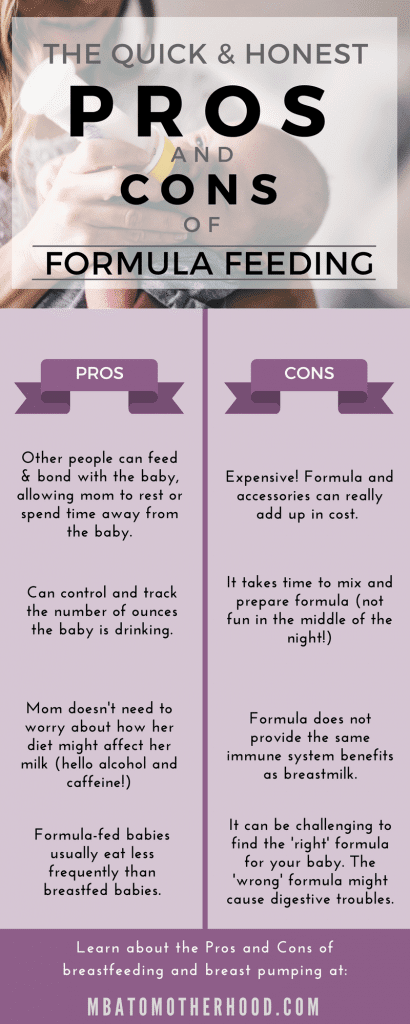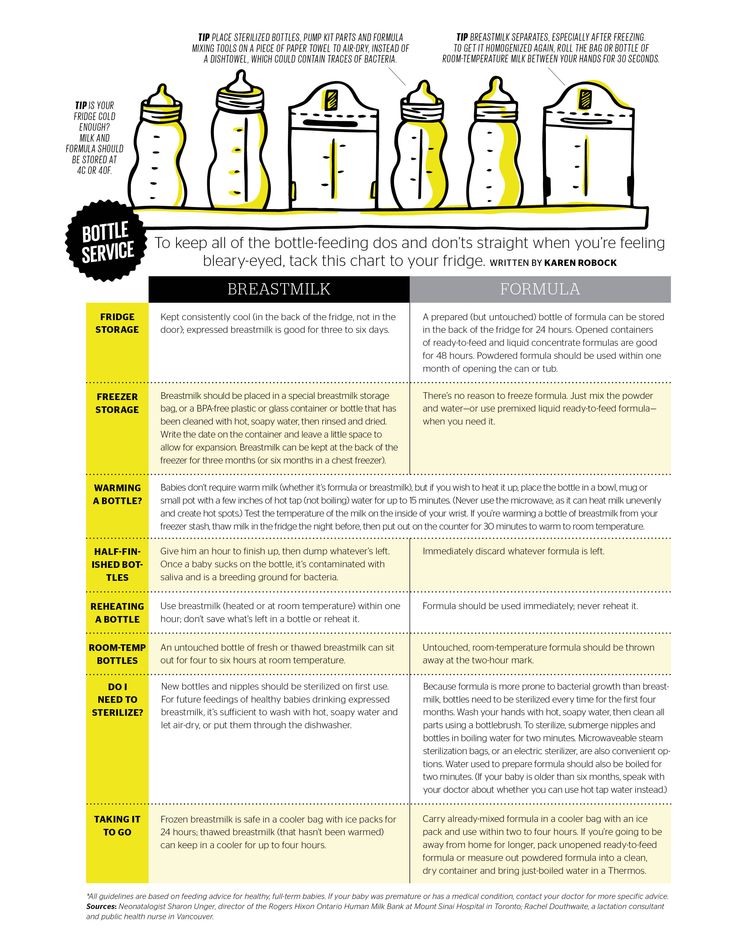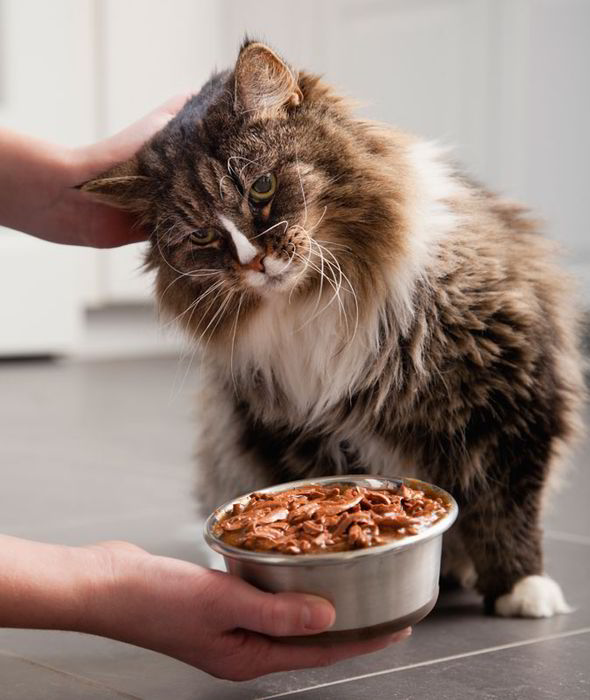How to feed baby formula when out
What if I need to formula feed my baby away from home? | Baby & toddler, Feeding articles & support
Here we explain how to prepare a bottle for going out and how to make up formula safely when you are out...
When you're making up formula for your baby, you need to be very careful to do it safely and hygienically. Formula powder isn’t sterile, so any bacteria in the powder can grow when the formula is made up. Your baby’s immune system is still not fully developed so they are sensitive to contaminated food and may become very ill if they consume it.
Read about how to make up formula safely here. The same guidelines apply when making up bottles of formula milk when you're out, but more precautions may be needed.
Here's how to prepare to bottle feed your baby formula when you're out...
What is needed for formula feeding when out?
If you need to prepare formula to feed your little one away from home, you'll need to take with you:
- a measured amount of formula powder in a small, sterile, dry container
- a vacuum flask of hot water that's just been boiled
- an empty sterilised feeding bottle with cap and retaining ring in place.
(NHS, 2019a)
The vacuum flask doesn't need to be sterilised but it should be cleaned thoroughly and only used for your baby. Boiling water should kill any bacteria present in the flask. If the flask is full and sealed, the water will stay above 70°C for several hours (NHS, 2019a).
How to prepare a bottle of formula in advance
- Make up a fresh feed only when your baby needs it. The water must still be above 70°C when you use it, to kill any bacteria that could be present in the formula powder.
- Remember to cool the bottle (with the lid on) under cold running water. Always test the milk temperature on the inside of your wrist before you feed it to your baby.
- Alternatively, you could use a carton of ready-to-feed liquid baby formula when you're away from home. This is a convenient but more expensive option. Once open, it will need to be sealed, stored at the back of the fridge and used within 24 hours.

- To protect your baby from the bacteria that can grow in formula, a fresh feed should be made up when your baby needs it. If this isn't possible, prepare the feed at home, cool it quickly and store it in the back of the fridge for at least one hour. Take the formula out just before you leave, and transport it in a cool bag with an ice pack and use within four hours. Use within two hours if you do not have access to a fridge or cool bag.
(NHS, 2019a,b; Public Health Scotland, 2021)
How long is formula OK for once made?
If you need to make up formula in advance, it should be used within:
- 24 hours if stored in a fridge
- four hours in a cool bag with an ice pack
- two hours at room temperature.
(NHS, 2019a; Public Health Scotland, 2021)
Bacteria can still survive and grow in the fridge or a cool bag, but at a slower rate than at room temperature. The longer the prepared formula is stored for, the greater the risk of infection (NHS, 2019a; Public Health Scotland, 2021).
Can I use bottled water to make up infant formula?
Bottled water is not recommended for making up infant formula feeds for your baby. This is because it's not usually sterile and may contain too much salt (sodium) or sulphate (NHS, 2019a).
If you're abroad and unsure of the water quality, it might be better not to use tap water. In this case you may need to use bottled water. Water that is labelled as 'natural mineral water' may contain too much sodium or sulphate for your baby. So choose still (not sparkling) water, making sure the seal isn’t broken. It will still need to be boiled to make sure it is sterile. Check the label to make sure that:
- the figure for sodium (also written as Na) is no higher than 200 milligrams (mg) per litre
- the figure for sulphate (also written as SO or SO4) is less than 250 milligrams (mg) per litre.
Once opened, store the bottled water in a fridge and use within the time recommended on the bottle; for example, it might say ‘use within 3 days’ (Public Health Scotland, 2021).
This page was last reviewed in February 2022.
Further information
NCT supports all parents, however they feed their baby. If you have questions, concerns or need support, call our support line on 0300 330 0700, whether you are using formula milk, breastfeeding or mixed feeding. If you’re concerned about your baby’s health talk to your health visitor or GP.
References
NHS. (2019a ) Formula milk: common questions. Available at: https://www.nhs.uk/Conditions/pregnancy-and-baby/Pages/infant-formula-q… [Accessed 13th February 2022]
NHS. (2019b) Types of formula milk. Available at: https://www.nhs.uk/Conditions/pregnancy-and-baby/Pages/types-of-infant-formula.aspx [Accessed 13th February 2022]
Public Health Scotland. (2021) Formula feeding: How to feed your baby safely. Available at: https://www. parentclub.scot/articles/formula-feeding [Accessed 13th February 2022]
parentclub.scot/articles/formula-feeding [Accessed 13th February 2022]
Information you can trust from NCT
When it comes to content, our aim is simple: every parent should have access to information they can trust.
All of our articles have been thoroughly researched and are based on the latest evidence from reputable and robust sources. We create our articles with NCT antenatal teachers, postnatal leaders and breastfeeding counsellors, as well as academics and representatives from relevant organisations and charities.
Read more about our editorial review process.
Formula milk: common questions - NHS
How much formula does my baby need?
Newborn babies need quite small amounts of formula to start with. By the end of their first week, most will need around 150 to 200ml per kilo of their weight a day until they're 6 months old. This amount will vary from baby to baby.
Although most babies settle into a feeding pattern eventually, they vary in how often they want to feed and how much they want to drink.
Feed your baby when they show signs that they want it. Babies tend to feed little and often, so they may not finish their bottle. Having a big feed does not mean your baby will go longer between feeds.
The amount of formula may change if your baby is unwell, in pain due to teething, or having a growth spurt.
How do I know if my baby is getting enough formula?
Your baby's weight gain and the number of wet and dirty nappies will tell you whether your baby is getting enough formula.
Your baby should have around 6 wet nappies a day from a few days after the birth. Nappies should be soaked through with clear or pale yellow urine, or feel heavy.
For the first few days after birth, your baby will pass a dark, sticky substance known as meconium. After the first week your baby should start to pass pale yellow or yellowish brown poo.
Your baby will usually be weighed at birth and again at around 5 and 10 days. After that healthy babies only need to be weighed once a month up to 6 months of age.
This information should be entered on a chart in your Personal Child Health Record (PCHR) or "red book".
If you have any questions or concerns about your baby's weight gain, speak to a midwife or health visitor.
How will I know if my formula-fed baby is hungry?
After a while, you'll get to know the signs that show your baby is ready to feed:
- your baby will start to get restless
- they'll begin to turn their head and open their mouth (rooting)
- they'll find something to suck – usually their fist or fingers
Try to feed your baby before they cry, as this is a late sign of hunger.
What do I need if I'm formula feeding away from home?
If you need to feed your baby away from home, take with you:
- a measured amount of formula powder in a small, clean and dry container
- a vacuum flask of hot water that's just been boiled
- an empty sterilised feeding bottle with cap and retaining ring in place
The vacuum flask does not need to be sterilised, but should be clean, and only used for your baby. The boiling water should kill any bacteria present in the flask. If the flask is full and sealed, the water will stay above 70C for several hours.
The boiling water should kill any bacteria present in the flask. If the flask is full and sealed, the water will stay above 70C for several hours.
Make up a fresh feed only when your baby needs it. The water must still be hot when you use it, to destroy any bacteria in the formula powder.
Remember to cool the bottle (with the lid on) under cold running water before you feed it to your baby.
Read more about making up a feed
Alternatively, you could use a carton of ready-to-feed liquid formula when you're away from home.
What if I need to transport a made-up feed?
If it is not possible to follow the advice above, or if you need to transport a feed (for example, to a nursery), prepare the feed at home, cool under a running tap or in a bowl of cold water, and cool it for at least 1 hour in the back of the fridge.
Take it out of the fridge just before you leave and carry it in a cool bag with an ice pack, and use it within 4 hours. If you do not have an ice pack, or access to a fridge, the made-up infant formula must be used within 2 hours.
If you do not have an ice pack, or access to a fridge, the made-up infant formula must be used within 2 hours.
If made-up formula is stored:
- in a fridge – use within 24 hours
- in a cool bag with an ice pack – use within 4 hours
- at room temperature – use within 2 hours
Can I use bottled water to make up infant formula?
Bottled water is not recommended for making up infant formula feeds for your baby. This is because it's not usually sterile and may contain too much salt (sodium) or sulphate.
See more about using bottled water to make up formula feeds
Video: how do I use the time I spend bottle feeding to help me bond with my baby?
In this video, a midwife talks about how you use the time you spend bottle feeding to bond with your baby.
Media last reviewed: 28 November 2019
Media review due: 28 November 2022
Page last reviewed: 21 November 2019
Next review due: 21 November 2022
Mixing outside the home: malyshi — LiveJournal
?- Relationships
- Food
- Society
- Medicine
- Cancel
- Cancel
I looked at the tags, I can’t find anything specific ((((throw slipper at me with a link if I don’t see where to look)))
Given: my son is only 8 days old, there is no milk, well, that is, 20-30 ml per day I strain something, but I still hope, all sorts of homeopathic pills, teas, etc. help little (((We , therefore, we are supplementing (in the amount of normal IV, since we do not complain about appetite), therefore, the mixture and the bottle are our friends, but these friends should be ready every 2. 5 hours. was, and not small, they took him with them. And he wanted to eat. And a hungry cry resounded the corridors, the chest, let me remind you, it serves us as a delicious nipple, but we want to eat after it, it seems to me, even more!0023
5 hours. was, and not small, they took him with them. And he wanted to eat. And a hungry cry resounded the corridors, the chest, let me remind you, it serves us as a delicious nipple, but we want to eat after it, it seems to me, even more!0023
So here's the question: HOW do you prepare formula outside the home? Maybe there are some devices - advise! Or is the only chance to leave home for 2 hours, no more, and if you are late to return - to listen to hungry cries?
We eat frisolak, it gets divorced at 40 degrees. And what happens if more / less degrees?
The husband offers a thermos, yes, but how to understand what temperature is in it? Or maybe there are special ones? And if I need to leave for a long time, well, let's say, to the Auchan metro, or to buy pants there? or am I stuck in a traffic jam, because the servants of the people are driving and the road is blocked? AAAAA!!!! I was so tuned in to breastfeeding that I have a bunch of nursing bras and no idea how to be friends with the mixture.
Talk to me, how do you deal with this?
PS, please, don't give advice on how to set up GW - for me this is already a sore point.
UPD. did anyone use a cooler? there are a lot of places where they stand ... (or am I just a mother-snake that I want to breed food from an unknown cooler?)
Tags:
-
Cough without fever
This is the third week already. It seemed to feel better on the pulmicort for three days, then they went out into the garden again, threw the antihistamine with nazanex, and again ...
-
apartment for sale
Good afternoon! Tell me please, this is the first time we are faced with the sale of an apartment, we ourselves have never bought a secondary house either. In the current situation, hope for ...
-
I will share the contacts of a wonderful nanny
Hello everyone) In connection with our departure, I am sad to part with our wonderful nanny - Lia Alekseevna.
 If you are looking for a person who will be with a child ...
If you are looking for a person who will be with a child ...
Photo
Hint Previous
← Ctrl ← Alt
- 1
- 2
Next
Ctrl → Alt →
-
Cough without fever
It's been going on for the third week already. It seemed to feel better on the pulmicort for three days, then they went out into the garden again, threw the antihistamine with nazanex, and again ...
-
apartment for sale
Good afternoon! Tell me please, this is the first time we are faced with the sale of an apartment, we ourselves have never bought a secondary house either. In the current situation, hope for ...
-
I will share the contacts of a wonderful nanny
Hello everyone) In connection with our departure, I am sad to part with our wonderful nanny - Lia Alekseevna.
 If you are looking for a person who will be with a child ...
If you are looking for a person who will be with a child ...
feeding rules, types of mixtures, tips for breastfeeding mothers
If breastfeeding is not possible, do not be upset: modern technologies make it possible to achieve maximum compliance with all healthy nutrition standards. We talk about the basic rules of artificial feeding and common mistakes.
Website editor
Tags:
Health
weight loss
Children
Food
VOICE recommends
The health of a newborn is directly dependent on his nutrition.
⚡️⚡️⚡️ TO STAY CONNECTED NO matter what, LOOK FOR US IN Yandex.Zen, VK, Telegram, Odnoklassniki.
If you can breastfeed, great, this is the best food for your baby. But if for some reason natural feeding is not possible, this is not a reason to panic: there are now many healthy mixtures that can replace mother's milk. Study our rules for artificial feeding, and everything will work out!
But if for some reason natural feeding is not possible, this is not a reason to panic: there are now many healthy mixtures that can replace mother's milk. Study our rules for artificial feeding, and everything will work out!
When to switch to artificial feeding
- Inability to breastfeed for medical reasons. With some diseases, as well as when taking a number of medications, breastfeeding is prohibited, since milk can be dangerous for the baby due to the content of toxic substances. Sometimes the reason to stop breastfeeding may be the child's disease (for example, cleft lip or severe malformations).
- Cessation of lactation. If there is not enough milk or it has disappeared completely, there is nothing to do, you need to supplement the baby with mixtures. As a rule, mixed and artificial feeding solve the problem.
- Impossibility of regular feeding. For example, you can go to work or end up in a hospital, and this is not a reason to starve a child, but a reason to switch to mixed or artificial feeding: the rules for feeding and portion sizes change somewhat.

- Inadequate nutritious milk from the mother. Sometimes the problem is solved by changing your diet, but if the milk remains watery and the baby is screaming with hunger, then it's time to supplement him with mixtures, and later switch to them completely.
- The wish of the child's mother. No matter how pediatricians talk about the benefits of breastfeeding, sometimes women who have every opportunity to breastfeed still prefer to give their baby a bottle. Well, that's your right. Just learn first the rules of artificial feeding of infants!
Rules for artificial feeding of a child
1. How to choose a formula?
It is best to consult a pediatrician, but in principle, if the baby is not lactose intolerant, any mixture approved by the Union of Pediatricians of Russia will do. It is great if the mixture contains Omega 3 and Omega 6 fatty acids, they contribute to the harmonious development of the nervous system.
For example, Nutricia's "Baby" formula meets all the standards and rules of artificial feeding, is produced according to European technologies with the strictest quality control and is recommended as an alternative to breast milk, even for newborns. Nutricia regularly evaluates the quality and demand for its products among consumers and doctors, analyzing the results of independent surveys of pediatricians and mothers with children up to 24 months of age.Iodine, selenium, zinc, iron with enough vitamin C (for better absorption), choline, taurine, L-carnitine are modern ingredients, the amount of which is specially selected in formulas to meet the needs of children.The quality is monitored by the Dutch research center Numico, the milk base for formulas is made in the most environmentally friendly country - Ireland, and production is open in Russia, at a plant in Istra, which received the international ISO 22000 certificate - maximum food safety control who in.
A mixture of the New Zealand brand "Bibikol" is made on the basis of healthy goat's milk. The range of the brand includes mixtures for the smallest and older children, and the quality of the products is confirmed by Russian pediatricians. As a rule, formula feeding does not cause serious side effects even during the adaptation period.
The Dutch brand Kabrita also makes milk formulas based on goat's milk, which is easier to digest than traditional cow's milk. The brand's products contain vitamins, microelements and other functional ingredients necessary for the development of the child.
The mixtures of another Dutch brand - Friso - are considered among the best due to their high quality. The brand offers mixtures for both newborns and older children. Subject to the rules for artificial feeding, this is an excellent choice for babies of different ages.
2. How do I know if formula is right for my baby?
If possible, the transition to artificial feeding should be done according to the rules, gradually replacing breast milk with formula. Pediatricians believe that adaptation to a new diet in babies under the age of one year takes from 3 to 7 days. During this period, stool changes, gas formation are possible, and this should not be frightened. As a rule, after a week, the baby stops worrying about the tummy and gets used to the new mixture. If this does not happen, it is worth choosing another food for him. For example, instead of the usual milk mixture, offer a fermented milk analogue. Major brands, like Nutricia's Malyutka, always have both options in their product line.
Pediatricians believe that adaptation to a new diet in babies under the age of one year takes from 3 to 7 days. During this period, stool changes, gas formation are possible, and this should not be frightened. As a rule, after a week, the baby stops worrying about the tummy and gets used to the new mixture. If this does not happen, it is worth choosing another food for him. For example, instead of the usual milk mixture, offer a fermented milk analogue. Major brands, like Nutricia's Malyutka, always have both options in their product line.
Formula milk can be used from birth
To improve digestion, a pediatrician can recommend cultured milk formula for formula feeding
3. How to choose a feeding bottle?
Feeding bottles are available in plastic and glass, and each has its own advantages, there are no strict rules for artificial feeding in this regard. Plastic ones are safer because they don't break. They are lighter, so it is convenient to take them with you for a walk. Glass is good because it can be sterilized many times, while plastic can deteriorate. Which bottle to choose for a newborn depends on the age of the baby. For the smallest, glassware is better, since sterility is in the first place. For older babies outside the home, it is better to use plastic bottles, but for home feeding, still leave glass bottles.
Glass is good because it can be sterilized many times, while plastic can deteriorate. Which bottle to choose for a newborn depends on the age of the baby. For the smallest, glassware is better, since sterility is in the first place. For older babies outside the home, it is better to use plastic bottles, but for home feeding, still leave glass bottles.
4. How to properly store baby food?
Prolonged exposure to non-standard temperatures, both low and high, can change the organoleptic properties of the product, affect its solubility, and cause swelling of the foil bag or the protective membrane of the can. In case of repeated heating and cooling of the mixture, especially in winter, further use of the product may cause a painful reaction in the child. Therefore, it is very important to observe temperature control from 0ºС to +25ºС. Formula feeding regulations do not recommend storing product near heat sources such as stoves, electric kitchen appliances, radiators, or on windowsills.
5. How long can I keep formula formula?
Less than an hour. If the baby has not finished eating, and you intend to finish feeding him in 15-20 minutes, you can not prepare a new mixture. But if the baby has eaten enough, and the feeding regimen for artificial feeding provides for the next feeding only after 2.5 - 4 hours, then the leftovers should be poured out, and a new portion should be prepared for the next time.
6. Does my child need probiotic formula?
GOS/FOS prebiotics are natural dietary fibers similar in composition to breast milk prebiotics, they are added as high-quality mixtures to improve digestion. The child quickly and painlessly gets used to such a mixture, absorbs it well and encounters stool disorders less often. Rules for artificial feeding of newborns and older children recommend giving preference to such mixtures, although this is not a strict requirement.
7. How do you know if your baby is eating enough?
You can use the Shkarin formula: The volume of the mixture per day = 800 ml + 50 x (M-2), where M is the number of months of the child's life. But this method is only suitable for babies older than 2 months. For newborns, everything is very individual, since babies are born with different weights and heights, so if you are afraid that the baby is malnourished or overeating, consult a doctor before feeding the baby formula again.
8. Should I change my formula?
If there is no reason to doubt the quality of the mixture and its tolerance by the baby, you should not change your child's usual diet just because the new mixture seems more useful, modern, etc. to you. Replacing the mixture can be a real stress for the child's body. And there is no guarantee that a new diet will not cause any signs of intolerance. Replacing the mixture is justified when passing the next age limit, and even in this case, the rules for artificial feeding recommend remaining faithful to one manufacturer.
9. How to prepare the mixture correctly?
According to the rules of artificial feeding, most mixtures are prepared as follows: boiled water is cooled to a temperature of 50-60 ° C (a higher temperature cannot be used, live bifidobacteria die and some vitamins are destroyed). Pour it into a bottle, add the exact amount of the dry mixture there. Close the bottle, mix the mixture thoroughly, shaking the contents of the bottle. Look at the light so that there are no lumps, the milk should turn out homogeneous. To check the temperature of the food - put a few drops on your wrist or elbow crease (the most sensitive place). The mixture should be slightly warmer than body temperature—i.e. practically not felt.
10. Technique and rules of artificial feeding
How to formula feed correctly? In order to make it comfortable not only for the baby, who should be in a semi-vertical position, but also for the mother during feeding, you can use additional pillows by placing them under the back. The position of the mother's legs can be different: you can put your foot on the foot, you can put a low bench under your feet, you can feed the baby in the prone position, while gently holding the baby. To reduce air swallowing, tilt the bottle so that the milk fills the nipple and the air rises to the bottom of the bottle. Hold your baby upright for a few minutes after feeding to reduce the chance of spitting up.
The position of the mother's legs can be different: you can put your foot on the foot, you can put a low bench under your feet, you can feed the baby in the prone position, while gently holding the baby. To reduce air swallowing, tilt the bottle so that the milk fills the nipple and the air rises to the bottom of the bottle. Hold your baby upright for a few minutes after feeding to reduce the chance of spitting up.
Mistakes with artificial feeding
- Blame yourself for being an "artificial" baby. Yes, mother's milk is considered the best food for babies, but if for some reason you cannot provide a child with them, this is not a reason to declare yourself a bad mother. Numerous children were bottle fed and did not experience any fatal consequences. Learn the rules of artificial feeding and follow them without blaming yourself needlessly.
- Feed on demand. Artificial feeding rules suggest feeding by the hour, not on demand.












